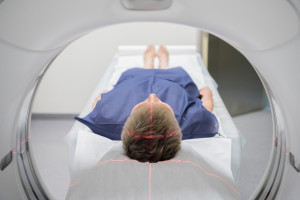In blogs such as this one, from Florida Lung, Asthma and Sleep Specialists, we feel a responsibility to raise awareness about various lung diseases.
In recent years, we have seen the public become much better informed about such diseases as Lung Cancer, COPD and Asthma.
We can only imagine how frustrating it must be for a patient to be diagnosed with a little publicized disease.
There are many diseases “out there,” just waiting to be infect beautiful healthy lungs, and we know you have not heard much about some of them.
This week we are bringing you information about IPF, Idiopathic Pulmonary Fibrosis, an Interstitial Diseases
One of the reasons we have chosen this topic is to make you aware of it, but also to explain how a new technology is helping to diagnose and treat it.
It is hoped the new technology mentioned at the end of this article will also be useful to diagnose many of the more familiar lung diseases.
What is IPF, and Interstitial Lung Disease?
IPF , Idiopathic Pulmonary Fibrosis, is classified with several other disorders as interstitial lung diseases.
1. IPF and all such disorders will cause inflammation as well as scarring on lung tissue.
2. Breathing becomes increasingly difficult and laborious for patients.
3. In fact it becomes so difficult to breathe, that “ it leaves sufferers with a life expectancy of only three to five years.”
4. As you might expect from its name, all interstitial lung diseases attack the interstitium, a part of the anatomy in everyone’s lungs.
“The interstitium is a lace-like network of tissue that extends throughout both lungs.”
Its job is to provide support to the microscopic air sacs (alveoli) of the lungs. Miniscule vessels in the interstitiutium permit gas exchange between blood and air in the lungs.
It is important that you understand that the interstitium is such a wafer thin membrane, it typically cannot even be seen very well on chest X-rays or CT scans.
IPF is not so rare as you might think. For example, research in England, has revealed 5,000 new cases of IPF are diagnosed in the UK annually, and the number of cases is growing exponentially by around 5 per cent every year.
Symptoms of Interstitial Lung Disease
In the case of IPF or any other interstitial disease, breathlessness is a major symptom. As you might expect, patients also endure a recurring cough.
New Technology Arrives For Wings and Lungs!
Meanwhile a new multi-disciplinary technology called Microfocus CT was developed, and used for the microscopic examination of tiny individual c arbon fibers in aircraft wings, among other engineering problems.
arbon fibers in aircraft wings, among other engineering problems.
The Microfocus CT can scan inside objects in great detail. It rotates a complete 360 degrees, simultaneously taking thousands of 2D images, which are then used to build detailed 3D images.
Doctors have long struggled with the difficulty of diagnosing IPF with normal CT scans and microscopic studies of lung biopsy samples.
As we stated, the interstitium is very hard to see, even with normal CT. Enter, New Science of Microfocus CT technology!
“Southampton researchers have now successfully applied Microfocus CT to image biopsy samples.
This allowed them to view each lung sample with a level of detail similar to an optical microscope but now in 3D.”
Yes, science has brought together the two divergent areas of engineering and medicine together.
Now, with Microfocus CT, doctors can be empowered to diagnose IPF and other interstitial diseases more quickly and choose appropriate treatment options. Lives will be saved.
Please return next week when this blog takes a deeper look at new discoveries involving lungs and Microfocus CT in the researchers’ work in Southampton, England in Part II.

